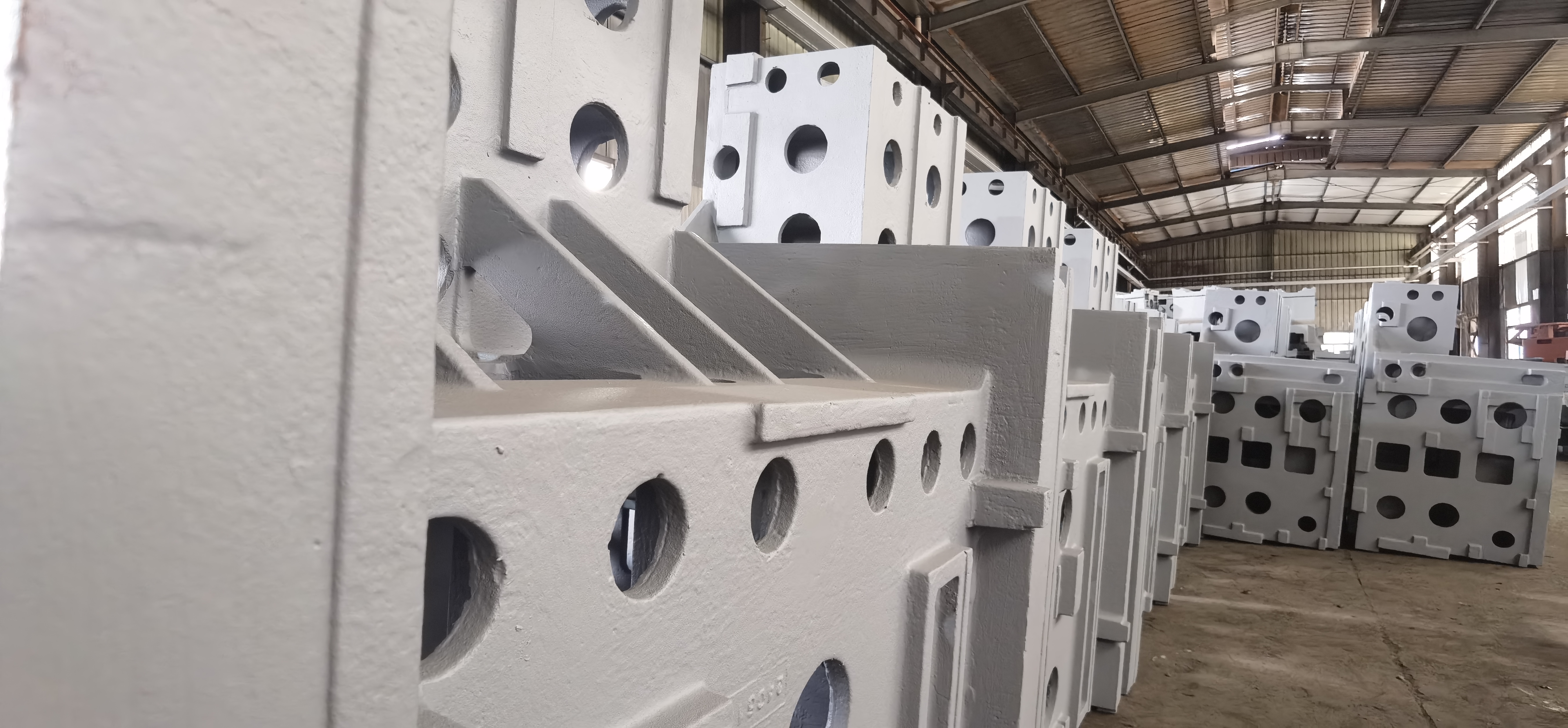Learn more
What are the heat treatment methods for ductile iron?
Time: 2024-09-19Source: View: 142
The heat treatment methods of ductile iron mainly include the following:
1. Annealing:Purpose: The main purpose of annealing is to eliminate casting stress, improve cutting performance, and obtain a ferrite matrix through the decomposition of eutectoid cementite, thereby improving the plasticity and toughness of the casting. Process: The annealing temperature is usually in the range of 720-760℃ or 880-930℃, depending on the structure and state of the casting. After annealing, the casting will be cooled to below 500℃ and air-cooled out of the furnace. High temperature annealing and low temperature annealing are two common annealing methods, which are respectively for castings with free cementite and ferrite + pearlite + graphite structure.
2. Normalizing:Purpose: Normalizing treatment aims to refine the matrix structure and improve the hardness and strength of ductile iron. Through normalizing treatment, pearlite matrix (accounting for more than 75% of the matrix) can be obtained, and the strength of cast iron may be further improved by air cooling, spray cooling, etc. Process: Normalizing temperature is usually in the range of 820-860℃ or 880-930℃. In order to increase the content of pearlite in the matrix structure, air cooling, spray cooling and other methods to accelerate the cooling rate can be used. After normalizing, the casting can be air-cooled out of the furnace, or in order to reduce stress, a tempering process can be added, that is, heat preservation at a temperature of 500-600℃.
3. Quenching and tempering treatment:Purpose: Quenching and tempering treatment is to heat the casting to a specific temperature, quench after heat preservation, and then temper at a lower temperature to obtain a tempered troostite structure, thereby improving the comprehensive mechanical properties of the casting. Process: Tempering treatment usually heats the casting to 840-880℃ or 860-920℃, keeps it warm for a certain period of time, quenches it in oil or water, and then tempers it at 550-600℃.
4. Isothermal quenching: Purpose: The purpose of isothermal quenching is to obtain the best comprehensive mechanical properties. By obtaining the structure of lower bainite matrix plus spheroidal graphite, the casting has the comprehensive properties of high strength, high hardness and high toughness. Process: Isothermal quenching heats the casting to 850-900℃, keeps it warm and quickly puts it into a salt bath at 250-350℃ for 60-90 minutes, then takes it out of the furnace and air cools it. Due to the limited cooling capacity of the salt bath, this method is generally only used for parts with small cross-sections.
There are many different heat treatment methods for ductile iron, and the choice of which method depends on the specific requirements and application scenarios of the casting. These heat treatment methods can effectively improve the performance of the casting and increase its service life and reliability.
-
Walking into the Casteks casting factory , they actually do these things for customers2024-09-12
-
Casting helps upgrade the "heart" of industry - what has Casteks done for the development of Suzhou's industrial mother machine industry?2024-09-05
-
Warm congratulations to STK Technology (Jiangsu) Co., Ltd. for being included in the second batch of "Standardized Conditions for Foundry Enterprises" list of qualified enterprises of China Foundry Association2024-09-03
-
Casteks Metal Technology (Jiangsu) Co., Ltd. officially joined the Jiangsu Foundry Association2024-08-22
-
Casting Observation: Why did the Japanese electrical giant choose Casteks? Three core advantages lay the foundation for cooperation2024-08-22



